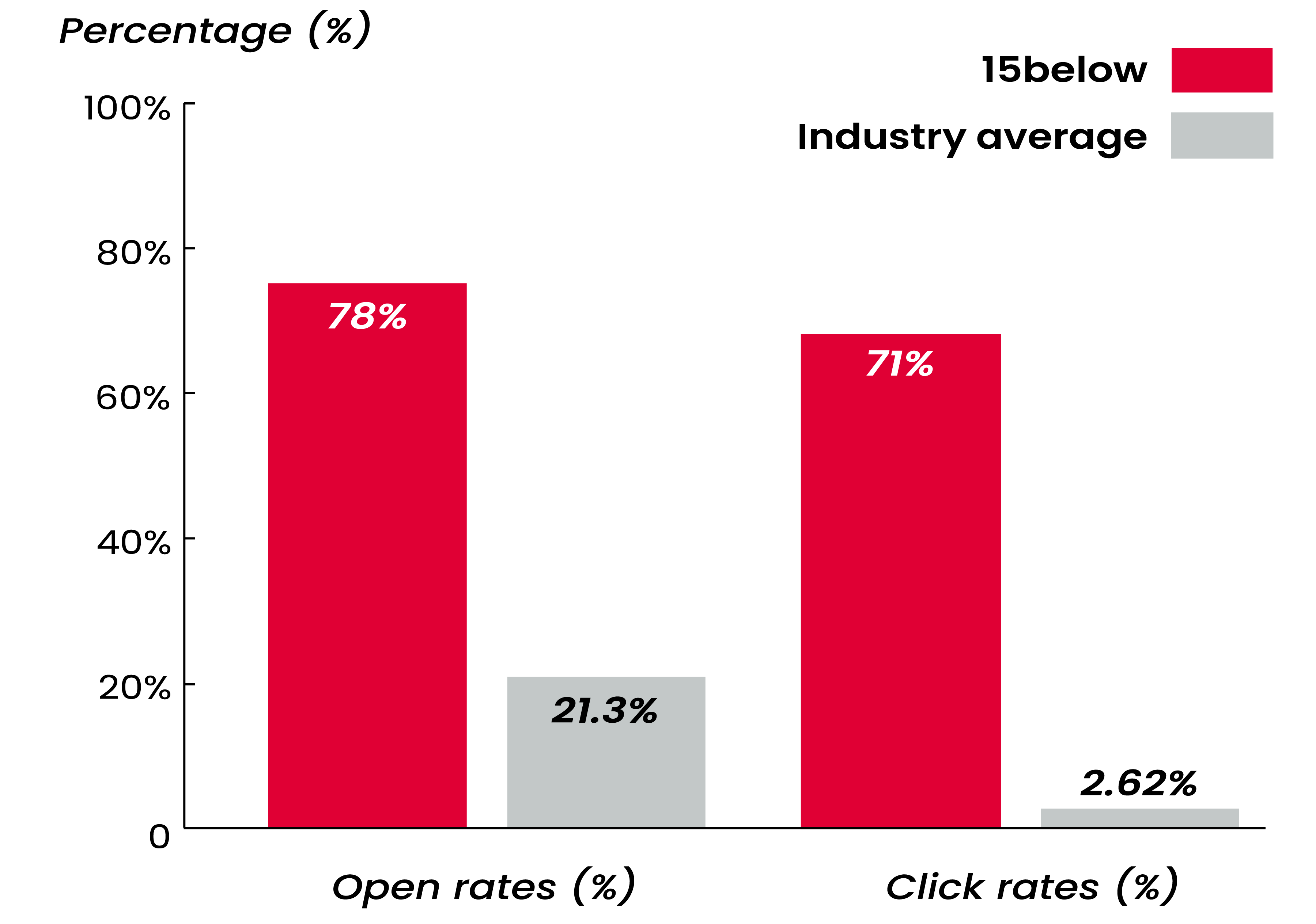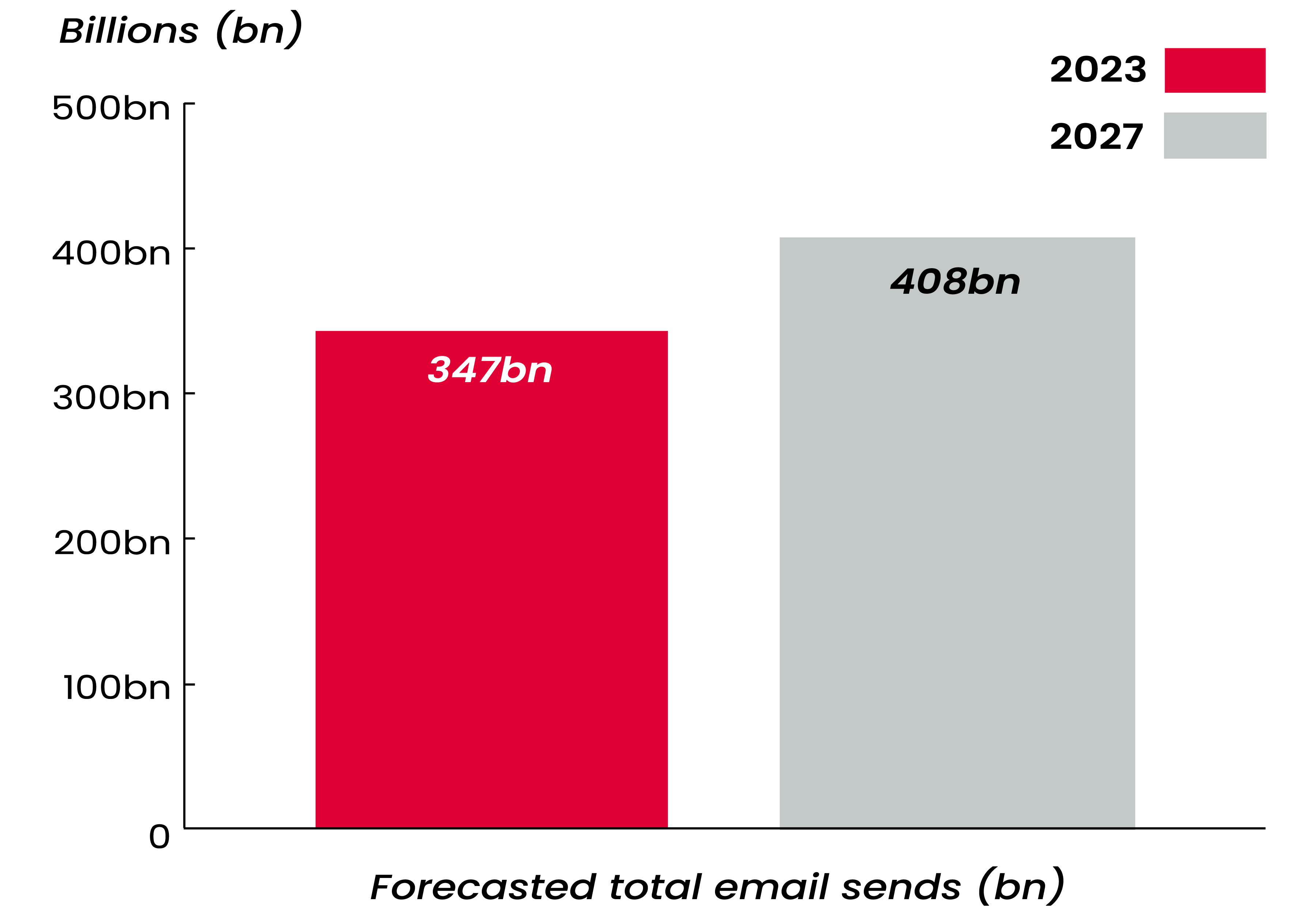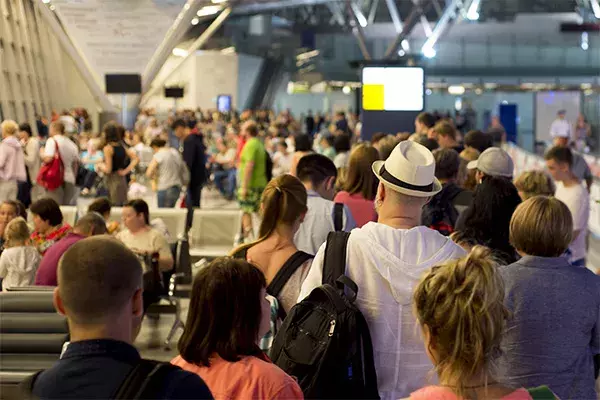29 May 2024 | Blog
Getting email deliverability right: Our experts reveal the keys to success for airlines
29 May 2024 | Blog
Getting email deliverability right: Our experts reveal the keys to success for airlines
Email deliverability plays a big role in shaping the overall experience for passengers. Being able to reliably deliver essential information in real-time builds trust and satisfaction, which in turn, has a huge impact on loyalty and revenue generation.

When the specifications of digital communication keep changing, making sure emails reach their recipient is a challenge. To help provide some answers, we've gathered insights from two experts at 15below – Damian Carter, Technical Operations Manager, and Marcus Dibb, Digital Interaction Designer.
Damian manages the technical, backend, and operational aspects of the platform. Meanwhile, Marcus is an email development expert with over 20 years' experience in design, development and deliverability - he specialises in delivering a consistent experience across desktop and mobile platforms.
We sat down with Damian and Marcus to ask them about some of the most pressing topics related to airline email deliverability:
Q1) A recent update from Gmail shows that the email landscape is constantly changing. How does 15below ensure emails reliably land in passengers' inboxes, considering the evolving security requirements and strict spam filters?

Damian: Over the past two decades, 15below has navigated this changing landscape by aligning our platform and emails with industry standards, proactively staying ahead of any new requirements. For example, when Google announced updates to its email sender guidelines, we were confident that we met the requirements as they were standard settings we had been implementing for many years. To be vigilant we performed a full review of each customer's deliverability settings at both a DNS and email server configuration level. We also ensured all customers were registered with the Google Postmaster and increased the monitoring frequency of user-reported spam rates via the Postmaster tools.
Now, Microsoft is following suit. From 5 May 2025, they’re enforcing stricter requirements for anyone sending more than 5,000 emails a day to domains like Outlook.com and Hotmail.com.
The goal is to make inboxes more secure. But if your messages don’t meet the new rules, they might never reach your passengers.
To stay compliant, your systems need to be properly set up with:
- SPF to show your emails are coming from an authorised source
- DKIM to prove they haven’t been changed in transit
- DMARC to make sure your domain policies are being followed
Microsoft also expects a few other things:
- Clear, working “From” or “Reply-To” addresses
- An easy way for people to unsubscribe (where relevant)
- Clean mailing lists, with invalid addresses regularly removed
- Honest subject lines that reflect what’s actually in the message
Following similar directives from Google and Yahoo, these aren’t just ‘nice to haves’ - they’re fast becoming a requirement for the industry. The direction of travel is clear. If you send a lot of email, you need to prove you’re doing it properly. We’re keeping a closer eye on things during rollout, so we can spot issues early and act fast.
We do all this for our airlines so they don’t have to worry about it. They can trust that we're keeping track of these updates on their behalf, allowing them to focus on other aspects of their operations. Non-customer airlines however, may need to allocate resources and establish internal teams to monitor and address such changes. For instance, if an airline were using an ESP (Email Service Provider) like Mailchimp to deliver emails, they would likely face challenges in making these changes or monitoring deliverability to the same degree.
Q2) How does 15below's platform handle the technical intricacies of sender reputation, and what role does it play in ensuring emails are perceived positively by email providers?

Damian: Our focus has always been on sending best-in-class operational emails rather than marketing communications, which contributes to higher open and click-through rates. By consistently delivering relevant content and adhering to authentication requirements, we maintain a strong sender reputation and so our emails are much less likely to be blocked by spam filters. In 2019, our customers experienced open rates as high as 78% and click-through rates of up to 71% for operational emails. Since then, we've continued to refine our approach, and in 2023, we sent nearly 704 million emails through our platform with a deliverability rate of 98.1%.
15below email deliverability rate vs industry average

Source: Open rates Mailchimp, click rates Mailchimp
Q3) How does 15below approach the design and construction of emails to enhance user experience, ensuring compatibility across the most popular devices and email clients?

Marcus: Our approach to email design and construction is based on collaboration with our customers and our expertise from years in the field. We take a consultative approach, offering personalised guidance on best practices to ensure the best deliverability rates and user experiences. On top of this, our team continuously monitors industry trends and updates to HTML standards, allowing us to anticipate how different features will render across different email platforms and devices. This proactive approach ensures that our customers' emails are not only on-brand but also display properly across the most popular devices and email clients, ultimately enhancing the overall user experience.
In my upcoming series of blog posts on email design and deliverability, I'll explore specific techniques and considerations for designing emails that are compatible across various devices and email clients.
Q4) How does 15below's way of working affect email delivery, considering the large number of emails sent, and how does it use different channels like WhatsApp and SMS to help travel brands engage customers better?

Damian: As mentioned earlier, by focusing on operational communications, we ensure that emails containing critical information for passengers are reliably delivered. This segmentation allows us to optimise the delivery process, and minimise the risk of important emails being lost amongst the 100+ emails people receive daily. This number is only expected to rise with Radicati forecasting total email sends to rise from around 347 billion in 2023 to around 408 billion by 2027.
Projected increase in email sends: 2023 vs 2027

Additionally, our multichannel approach, including WhatsApp and SMS, improves our ability to engage passengers. In 2023 alone, we delivered over 110 million SMS notifications, demonstrating the scalability and reliability of our platform. By diversifying communication channels, we provide travel brands with a comprehensive solution to connect with passengers across various platforms. This ensures that critical information reaches passengers, regardless of their preferred communication method, contributing to an improved overall passenger experience.
Q5) How does 15below use data to help travel brands continuously improve their email strategies?

Marcus: We prioritise consistency and deliverability throughout our design approach, thoroughly reviewing emails for possible issues and following a proven structure based on 20+ years of experience, plus extensive testing and research. Our platform also provides valuable data-driven insights, allowing for continuous improvement. This iterative process based on real-time data offers travel brands a competitive edge in refining their email strategies.
Working with more than 100 brands over the last 20 years, we have encountered all imagineable limitations and challenges associated with email build, deliverability and display. We use this experience to help our customers style their email build.
We don’t stop at the technicality of the build, but also offer guidance on email content. An obvious example would be advising our customers to focus on the main message of disruption-based emails, rather than attempting to generate revenue (through ancillary offerings, for example) that our insights show only frustrate passengers during times of stress. Under the new Google and Yahoo guidelines, offering up-sells in transactional emails could result in a sender’s domain or sending IP address being black-listed.
Whilst building email templates we also use an extensive range of tools to test them on all popular email clients, to ensure a consistent brand experience.
What does this all mean for airlines?
Adapting to industry standards and prioritising operational notifications are just two of many considerations. Our discussion with Damian and Marcus has focused on key changes that travel brands can implement to enhance their email strategies and improve passenger engagement.
By focusing on sending relevant content and adhering to ESP requirements, travel brands can effectively manage their sender reputation. This will improve deliverability and alongside user-centric design, create emails that render and function properly across platforms, will enhance the overall passenger experiences.
Multichannel engagement allows travel brands to connect with passengers on their preferred platform, leading to better engagement and customer satisfaction. Use data insights for a more personalised approach and to understand each customer's communication preferences in terms of channel and messaging. It’s also crucial to recognise the appropriate time to use each channel; for instance, during disruptions, passengers may not actively check their emails, so it's best to use another channel instead where the information is more likely to be received.
Ultimately, success in email strategy relies on a combination of factors, including technical requirements, sender reputation, email design, and content strategy. By implementing these changes, travel brands can enhance their approaches, improve passenger satisfaction, and drive passenger loyalty.
If you would like support with your email strategy or utilising multiple channels to engage with your audience, please don’t hesitate to get in touch and speak with one of our experts.




